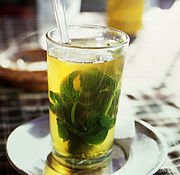Archive a Royal adventurer at first in kasbah oudaya rabattarifa in Morocco
The Kasbah of the Oudayas no less than epitomizes the whole of Morocco.
Today, in keeping with its glorious past, the kasbah is still one of Rabat’s proudest features. It is still the place everyone wants to be, as evinced by its Café Maure, one of the most popular meeting places in the city. From the umbrella-shaded tables on its terrace, one can see the boaters and fishermen on the Bou Regreg, and even see clearly into the medina of Rabat’s sister city, Salé. The Oudaya Museum, housed in the same building that once gave shelter to the country’s sultans, hosues an impressive array of carpets, copper work, jewelry , woodworking, ceramics, musical and astronomical instruments, as well as a display devoted to the different styles of dress throughout the various regions of Morocco. One of the museum’s favorite attractions is a room decorated in the traditional Moroccan manner, complete with golden silks and brocade from Fes.
The kasbah is still the place everyone wants to be.
An Entrance to the Kasbah of the Oudayas in Rabat.
Standing at the mouth of the Bou Regreg, where the river’s waters pour into that of the Atlantic, the placement of the fortifications was well chosen, to put it mildly. The original fortress was constructed during the Almohad dynasty in the 12th Century. Also built during this time was the Bab Oudaya, the kasbah’s main gate that was more ornamental than functional, and its mosque, which is the oldest in Rabat. It was during the reign of the Alouite sultan Yacoub al Mansour that the kasbah gained its name. The sultan cut a deal with the Arab tribe known as the Oudayas, a warrior people he hired to defend the city from the threat of regional tribes.
To walk the streets of the Kasbah of the Oudayas is to see the old men chatting to one another in their hooded jellabas, to feel the fresh breeze as it blows in from the sea, and to know that you are walking through history. If only these rampart walls could talk, what stories they would tell.
morocco culture,moroccan food,morocco food,moroccan cuisine,morocco beaches,moroccan meal,beaches in morocco,moroccan culture,hercules cave,hercules cave morocco
























